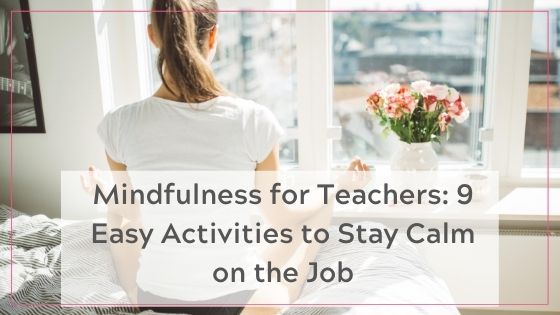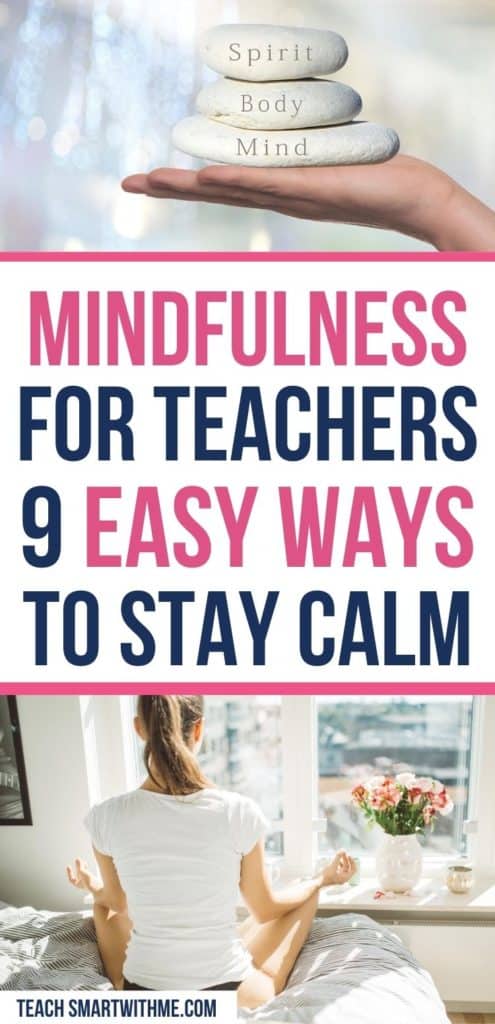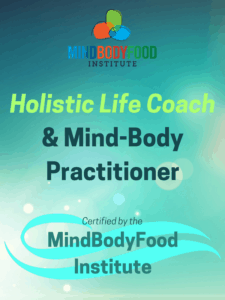Now more than ever in history should the emphasis be on helping educators minimize their stress. Enter – Mindfulness for teachers; a way to learn how to stay in the present, to focus on what you have control over and overcome chronic stress reactions.

The world is an overwhelming place at the moment, and I know I have personally struggled along with many others. It’s difficult to keep your thinking away from the negatives and focus them on the good stuff to celebrate in life.
But at this time, I know as a teacher, my profession is experiencing probably the toughest out of many – with this crazy world situation, as well as having to cope with massive change, uncertainty and unrealistic expectations that have been thrown at them, now more than ever before!
If you’re a teacher, you know what I’m talking about!
All of this is taking a huge toll on the mental and emotional health of teachers.
Get help with your stress HERE:
If I can be of any help at this tumultuous time and in the preparation for what comes afterwards, it would be to tell you something that’s been working for me (in my very difficult journey recovery from burnout).
This is where I tell you about the power of MINDFULNESS and in particular; mindfulness for teachers.
I know what you’re thinking…
Is she for REAL!
Just settle for a minute… If you could open yourself up to learn something NEW and INNOVATIVE, that would help you cope better with all of this, would you be prepared to listen?
Keep reading, if you’re interested in the idea of Mindfulness for teachers, even if you think it might be a bit too ‘woo woo’ for you.
Mindfulness is something out of the box that can make a difference in your teaching life – the daily worries, the stress and the overwhelm you might be experiencing can all be tackled with mindfulness.
In this article, you’ll find out what research says about the amazing benefits for anyone experiencing daily stress – to assist you to relax and minimize the negative effects on the body; and why I believe, the practice of Mindfulness for teachers is going to be hugely beneficial to you. But only if YOU let it!
How can mindfulness help teachers?
You’d be surprised about the many benefits that come from the practice of daily Mindfulness for teachers.
In previous articles, I’ve discussed some of these benefits for both teachers and students, in a post called 6 Easy Ways to Use Mindfulness in the Classroom, but I’d like to revisit them here with you.
Benefits of mindfulness for teachers:
Mindfulness is known to have many welcoming advantages to help both the body and the brain.
Things like:
- Stress reduction
- Health and immune function
- Focus and attention
- Handling difficult emotions
Additionally, Positive Psychology states that many ailments such as; anxiety and panic attacks, depression, fatigue, headaches and post-traumatic Stress Disorder (PTSD) can be treated, when a dedicated Mindfulness-Based Stress Reduction Program (MBSR) is implemented.
So with all of this in mind, you’re probably aware that with the increased workload and demands on teachers, the amount of daily stress has also increased. I’m sure you’re probably feeling it too; like I was.
Get the FREE Stress-Busting Tips HERE:
This has become a HUGE problem.
Stress itself isn’t the problem, but the continual day-in-day-out stress and also how the individual handles the stress is the worry. In addition to this, is knowing whether the individual uses stress relief techniques to regularly minimize the effects of stress on the nervous system.
It’s now known that the practice of mindfulness helps a person cope much better with stress and these common stress-related conditions.
While some people handle stress quite well, others alternately, (who are more sensitive and susceptible to it), require methods to help counteract its effects.
This is where mindfulness for teachers can be such a key element in fighting stress.
Related Articles:
- 15 Stress Management Techniques to Calm the Mind and Body + Free Printable
- Why Is It So Important to Get a Handle on Teacher Stress?
And the great news is, experts are saying that if Mindfulness is enacted in the WORKPLACE, it can be useful in the reduction of JOB-RELATED STRESS experienced by employees.
So much so, in studies conducted, workers that engaged in ‘brief mindfulness intervention, reported decreased stress, anxiety, depression, fatigue, and negative affects, while also experiencing greater satisfaction at work.’
In addition to all of this, and one of the most important to be aware of, mindfulness is also closely linked to the LOWERING of the incidence of burnout and turnover at work.
Wow! This is an exciting breakthrough!
Let’s now take a look at what mindfulness involves:
What activities support mindfulness?
Brilliant Mindfulness offers some helpful resources for teachers to help TO be more mindful in the day. They recommend the best activities should include times for:
- Mindful seated breathing – focusing your breath on your nose, your chest or your abdomen (wherever you notice it most in your body)
- Mindful listening
- A body scan practice
- Mindful moments – for example: bringing your thoughts to your daily routines and being attentive when you’re washing up, driving to work, eating breakfast or showering etc.
So, how do you create a mindful classroom?
Many teachers are keen to implement mindfulness with their students, so I’ve included a few helpful Mindfulness activities that can be used in the classroom with your students:
- Breathing Buddies – a short video by Daniel Goleman
2. KidsRelaxation.com – Spider-Man – Practicing Mindfulness and Increasing Focus
3. Left-Brain Buddha – 10 Ways to Teach Mindfulness to Kids
A more in-depth article called: 6 Easy Ways to Use Mindfulness in the Classroom + Free Printable discusses how to incorporate these types of activities with your students to create a mindful classroom.
Right now, let’s look at the 9 different types of mindfulness activities for teachers to feel calmer in the face of stress.
9 Mindfulness activities for teachers
This set of 9 skills can be learnt and adopted into your routine, to be more mindful and help balance the mind, body and emotions:
Mindfulness for teachers activity 1: Intentional focused breathing
Focusing on your breath throughout the day is an easy way to be mindful and slow down. By using a deep, focussed breathing strategy, it can help you to revert your body from a stressed-state into the relaxation response and calm your nervous system.
If you want to learn this style of transformative breathing and be much more intentional with your breath, (not just ‘3 quick puffs and your done breathing style’,) read this in-depth article called An Easy Way to Relieve Teacher Stress (You Won’t Believe How Simple It Is!)
Mindfulness for teachers activity 2: Self-check-in
A simple way to do a self-check-in is to stop and ask yourself how you’re body is feeling. Is it tired? Is it thirsty? Hungry? Happy? Sad? etc; then you’ll be able to meet any need it requires at that time and help you focus on how you are in the present.
You don’t need to WORRY about how you feel, just sit with these feelings, acknowledge them and then move on.
Th self-check-in activity is also great for developing your own self-awareness.
Mindfulness for teachers activity 3: Journaling (Self-Reflection)
Using your favourite journaling method can be a helpful addition to bring in mindfulness for teachers – to help in the processing of your worries, difficulties or problems you might be experiencing.
Journaling is a tool that will help sort through your thoughts to isolate the worry and stress, to stop it taking over your being.
With your thoughts on a page, you’re able to see things more clearly, separate FACT from fiction and constructively FIX something that is bothering you, rather than be consumed by it.
Journaling helps to train your mind to separate worry from daily thoughts, and then replace these negatives with more helpful ones (Viki Thondley, 2017).
Use whatever method you like to journal. It might be gratitude journaling to ‘free-write’ all that you’re thankful for in your life; it might me bullet point gratitude journaling (a quicker method to do the same thing); or just doing a ‘brain dump’ to release your pent-up issues or hostilities from the day, which can be very therapeutic.
Whatever journaling method you choose, know that this is a wonderful method to bring you into the moment. It helps you become CONSCIOUS of your own truth, ESCAPE from external noise and CONNECT with yourself, in a safe space, so that you can shed light on your choices (Viki Thondley, 2017).
Related Article: Learn How to Improve Teacher Happiness with Gratitude Journaling
Mindfulness for teachers activity 4: Meditation
Meditation isn’t anything new, but it’s something new I’m trying in my life at the moment, because previously I thought it was a bit ‘out there’ for me.
But, meditation has been practised for hundreds of years by many cultures and is now a well-respected, scientifically tested and medically endorsed activity.
The act of meditation is known to have enormous benefits to a person’s physical, mental and emotional health and is like the antidote to stress. – slowing the heart rate, lowering blood pressure & muscle tension; and regulating breathing to activate a sense of calm (Viki Thondley, 2017).
Knowing this, it can be of huge benefit to all stressed-out teachers.
Like gratitude journaling, there are many variations of meditation and all have wonderful outcomes. Whatever style of meditation you perform, research shows that meditation helps the nervous system to deal better with stress, as well as reducing the mental chatter, softening the mind to be more centred and calm.
This is great news for any overwhelmed teacher!
Here’s a guided mindfulness meditation for YOU from Calm. Try this if you’re new to this type of activity. Meditate: Be Present:
Here’s another Guided mediation from headspace for you.
Mindfulness for teachers activity 5: Affirmations
Affirmations, simply put, are statements you recite out loud to help reframe your thinking.
Naturally, your mind will focus on negatives and fallacies, but you can use a variety of positive reframe statements as a proactive way to help revert the mind away from these untruths, unhelpful thoughts or ruminations.
I have found that affirmation statements will assist in many situations and the field of Positive Psychology has been using this helpful technique for many years as a way to assist people to retrain their minds and get over past trauma and stress.
Affirmations are also a great way to think about areas of your life you’d like to CHANGE and turn the negatives into positives.
Here are some examples of how to re-frame the negative inner dialogue and then use each as positive affirmation statement to read in your day:
| Old Statement (inner self-talk) | New Reframed Statement |
| I’m not good enough | I am worthy |
| I can’t do this | I can do difficult things |
| I’m stupid | I will make mistakes but that’s ok |
BONUS TIPS from Mindtools.com to help you get started with using affirmations:
- Positive affirmations are a way to overcome self-sabotaging thoughts.
- To use affirmations think firstly about what THOUGHTS and BEHAVIOURS you’d like to change in your life.
- Next, when writing your own statements, come up with positive, credible, and achievable affirmations that are the OPPOSITE of these thoughts.
- Repeat your affirmations several times per day, especially if you find yourself slipping back into negativity.
Related Article: 19 Positive Teacher Affirmations You Need to Start Now!
Mindfulness for teachers activity 6: Use a Weekly Planner
Many teachers are used to organizing their day with a planner, but did you know that by using this planning method you are being more mindful?
When you write down the details of tasks and appointments for the day, week or month, you bring to the forefront of your mind what is important and what you’d like to achieve.
Planner use is an effective way to operate ‘in the moment’ and also obviously to help with your productivity and time management.
So keep using your planner, teachers!
Mindfulness for teachers activity 7: The power of visualization
According to neuroscience, your body doesn’t know the difference between an event you are ACTUALLY experiencing or one you are imagining (Viki Thondley, Mind Body Food Institute, 2017). To put this in simple terms – thinking and doing activate the same parts of the brain.
This is very helpful to know, particularly when you want to feel calmer in a stressful situation or when you’re going through difficulties in your day., because you can ‘trick’ your brain into a calmer state.
If you’re feeling stressed or anxious in your teaching day, you’ll need to begin your own visualisation technique.
- This is done by IMAGINING yourself feeling calm or in a peaceful place – to do this, think of specific memories of when you have felt calm and relaxed.
- Close your eyes if you need to, imagine this place of calm (in the bath or at the beach, or even imagining yourself on a tropical island – whatever helps settle you).
This technique of visualization will trigger your body to respond accordingly to your thinking and help settle the nervous system from this heightened state of stress.
So teachers, start to visualise yourself feeling calmer – think it into existence – and your body will respond – slowing blood flow & rapid heart rate, relaxing your muscles and reducing blood pressure etc (read this article for details about other physical signs of stress).
DON’T FORGET TO GET YOUR FREE STRESS MANAGEMENT TIPS HERE BEFORE YOUR GO:
Regularly give this wonderful visualization technique a go and you’ll be on your way to managing your stress and feel much calmer.
Mindfulness for teachers activity 8: Body Scan
Similar to a self-check-in, a body scan is exactly done how the name suggests. Regularly throughout the day stop and stand still while you concentrate your thoughts on each part of your body, (while scanning from top to bottom or in reverse).
For example: as you stand in position, focus your mind on your toes or your feet. Assess how they feel. Start to wiggle your toes. Then move up to your ankles or calves and consider how this part of your body feels. Continue scanning each part of your body, through to your knees, thighs, hips, stomach, chest, shoulders, neck, head etc, thinking about how each part feels as you go.
This is a great way to release tension or tight muscles that have built up in parts of your body over the day!
Mindfulness for teachers activity 9: Time in nature
Taking some time-out to spend in nature can be very therapeutic for your soul. To make it more of a mindful experience, leave the technology at home and focus all of your 5 senses while you’re outside.
Using your senses to engage in what you see, feel, hear, touch and smell, is a wonderful way to connect with yourself and the world around you.
You could also include your students in this activity and take a mindful nature walk to engage them in the world at large. It a beautiful experience, especially to get their heads up and notice what’s around them.
In closing – Mindfulness for Teachers
If you want to counter the effects of stress and experience the awesome benefits of Mindfulness for teachers, start practising the art of mindfulness. Learn to become more observant and aware in your day, to notice the moments exactly how they are, with all of your senses to reconnect with yourself and find that CALMER you.
Related Articles
- 5 Essential Working Smarter Tips for Teachers (You Don’t Want to Miss)
- Enjoy Your Life with 9 Relaxing Hobbies for Teachers
- 10 Important Essentials to Builder Teacher Well-Being
- 7 Honest Tips How to Beat Teacher Burnout (from Someone Who Has)
PIN FOR LATER!



Leave a Reply